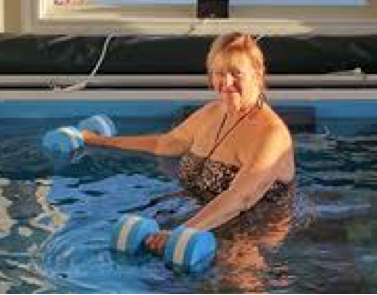Got to go to rehab? Swim Swim Swim!
- Penny
- Nov 14, 2017
- 3 min read
I have always enjoyed a variety of sports, from horse riding and running to boxing and high impact intensive workouts. In January 2015, I was diagnosed with three ruptured discs in my lower back, the pain was excruciating. I was faced with the realisation that I had to stop all the weight bearing, high impact stuff and was looking at the option of surgery. Lucky for me that I love swimming! Two years on and whilst I am not 100 per cent pain free, I have managed to avoid surgery and rebuild my damaged back through swimming and water-based exercise along with a good Pilates teacher!
When you think of swimming you may think of a leisurely dip in the pool on holiday, fun-filled aqua zooms with the kids or hard-core workouts triathlon style. While water-based activities can be all of these things, they also present an excellent setting for rehabilitation and recovery following an injury and you don’t have to be a competitive swimmer to participate. Anyone who has experienced a whole range of injuries can benefit from this type of aquatic therapy. In fact, even vets have prescribed aqua rehab for horses and dogs that have suffered joint conditions.
Swimming can aid rehabilitation by . . .
Helping to strengthen muscles and ligaments
Improving cardiovascular fitness
Gently supporting your body, particularly in injured areas
What makes water such a wonderful medium for rehabilitation? The key is buoyancy. Water helps keep your body afloat, but also provides resistance that will make certain movements more challenging.
Here are just a few of the benefits of swimming:
Less pressure on the body
The buoyancy of water helps support your body weight, taking the pressure off joints making it a no-weight, low impact workout.
By exercising in the water, you are ultimately safer and have a lesser chance putting yourself at risk of further injury.
This makes swimming and other water-based activities good choices for people who are suffering from a range of injuries or pain from arthritis and joints, back and disc issues, ligament, muscle or tendon problems as well as cardiovascular ailments and diabetes.
Variety of Strokes
Each of the swim strokes will work various parts of your body and modifications to technique can greatly assist the recovery of injury or work around isolated pain or problem areas. Maintaining good body position is key and working with a qualified instructor who can assess your strokes and make relevant adaptations where needed will ensure that you are swimming safely and effectively.
There are a range of aquatic activities that can be added into your work out depending on your level of fitness and existing swimming ability. Walking in water, pool ‘noodle’ assisted exercises, deep water jogging and aqua aerobic exercises add a variety of intensity and can help to target specific areas of rehab as well as strengthening core muscle groups. The use of additional aquatic equipment such as noodles and aqua dumbbells will also add a more strenuous element as you progress. Floating can also be used as active stretching or supported floating will give you ultimate pain relief!

Water has a well-deserved reputation for healing
Just as every patient is unique, so will his or her recovery be. However, time and again, swimming and water-based exercise is being used in healthcare and sports settings to speed up healing. Whatever your age or injury, Aqualife can create a personalised water rehab session that will assist you on your journey to recovery and create a love of swimming for the future.
#Swimmingforhealing #SwimmingRehab #Swimmingrehabfrominjury #Swimmingrehabfromillness #SwimmingRehabilitation #Exercise #Swimminglessons #Health #Adultswimminguk #Aqualife #Adultswimminglessons #Swimmingfitness #Swimming #BenefitsofSwimming #SwimminglessonsWestKent #AqualifeSwimming #Swimmingtoimprovehealth #Swimmingtohealbody




































Comments